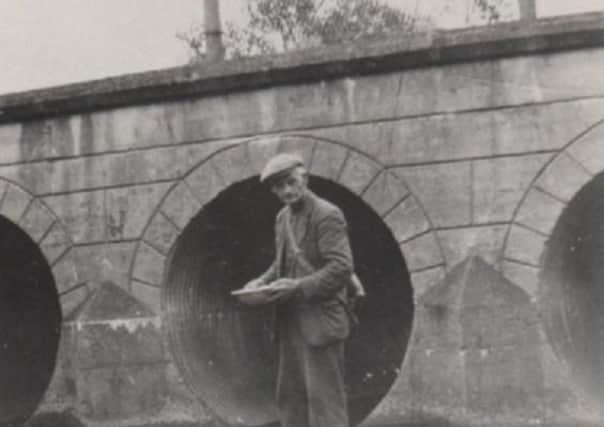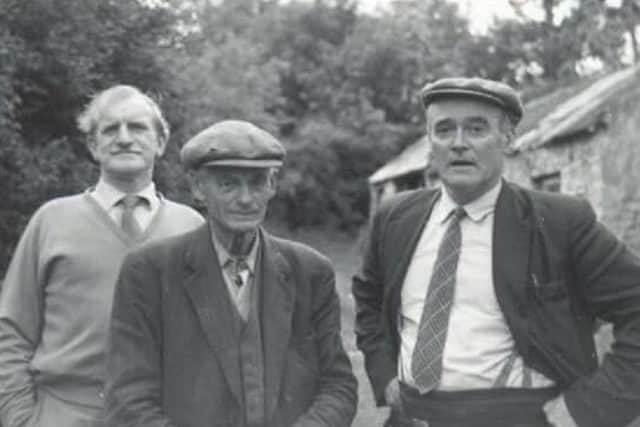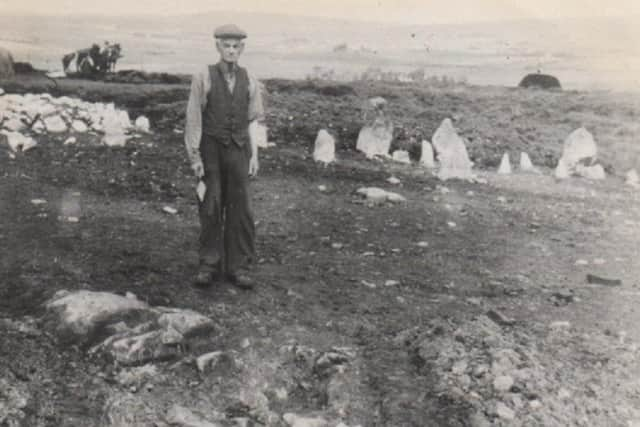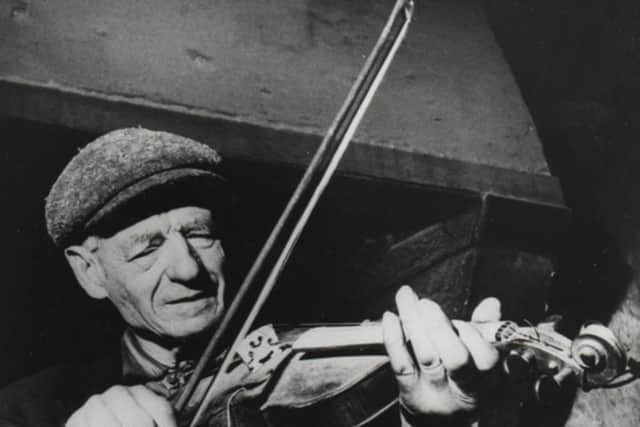BYGONE DAYS: Life and times of poet George Barnett from The Sixtowns


Graham had been in touch to ask me it I had ever heard of George (‘Geordie’) Barnett who would have been a near neighbour of my grandparents. I will be honest and say that I had never heard of him, but I am so glad that Graham emailed me about Barnett.
So who is Barnett, I hear you ask.
The Ulster History Circle notes: “Anyone who lived in, or passed through, the Sixtowns district (about three miles west of Draperstown) during the early 1960s or before, would not have been surprised to see a small, thin man, wearing a peaked cap and Wellington boots, walking vigorously along the road or across the fields. His slightly stooped frame and piercing eyes would have alerted the onlooker to the fact that George (Geordie) Barnett was always acutely observant with regard to botany, geology, archaeology or, indeed, anything unusual. Although he had received little formal education, his curiosity about his surroundings had led to detailed study and his advice was much sought after. As an historian, archaeologist, botanist, geologist, folklorist and poet, Geordie had spent sixty years studying all aspects of the Sperrins.” And not only that, he is renowned as the man who discovered the Beaghmore Stone Circles in Co Tyrone near to Cookstown. On his death in 1965, Professor E E Evans, wrote: “George Barnett, who died on 10th April 1965, in his ninetieth year, was a man of rare quality who, with little formal education, won more than local fame for his knowledge of field archaeology, botany, and geology.”


Advertisement
Hide AdAdvertisement
Hide AdWhile looking through the old edition of the Northern Whig to find references to Barnett in the Nature and Antiquarian Notes, which Graham suggested that I should do, I came across a reference in February 1929 to what Barnett referred as a “rook demonstration” at the Cavanreagh rookery. This would be the locality that my mum grew up in and where my grandparents owned their farm and mill. Indeed, I have fond memories of the racket the rooks used to make in the tall trees which backed on to the Glashagh Burn, a tributary of the Moyola River, that runs along our family fields.
Barnett wrote: “Rooks began to appear again at the Cavanreagh rookery at Sixtowns on 18th January, and continued to visit it in small numbers to the 25th; they were probably survey parties viewing the nesting sites. Over 500 rooks visited the rookery. The greater part of the flock had arrived before my attention was drawn to it by the volume of rook noise which came from that direction, but I was just in time to witness the arrival of the last detachment of 100 rooks, which received tremendous ovation on its arrival, the noise being increased to almost deafening proportions. This clamour shortly afterwards died down considerably, and in about an hour’s time the whole flock took to wing; as if with one accord and disappeared down the valley, after listening, possibly to a demonstration lecture for the benefit of the birds young birds’ from the experts of the reconstruction department, on the most advanced methods of twig-twisting and mud-daubing. Possibly pairing had already begun, and an incident which I witnessed earlier in the day lends colour to the assumption. Two miles farther up the valley I observed five rooks flying dejectedly and silently towards the mountains. They were probably five disgruntled and disappointed suitors who had failed to find partners in the Derrynoyd or Largantogher flocks, and were for trying their luck in Tyrone – and lets hope that they were successful. Since the above incident occurred the rooks have revisited the rookery in force on four different occasions, but have not yet permanently taken up their old quarters.”
I believe that I will spend many hours in the coming weeks looking for Barnett’s natures notes about the Sixtowns and locality to see if any more writings jog any of my old memories.
In addition to his nature notes Graham told me that Barnett was a respected poet and he shared a couple of Barnett’s poems which capture yesteryear.


Memories
(19th July, 1958)
Advertisement
Hide AdAdvertisement
Hide AdI sigh when I think of the long long ago, When my limbs they were strong, though now they are weak, When I climbed the wild mountains and tripped o’er the heather, To toil in the bogs at the winning of turf.
Then cattle grazed round me on the sedges and heather, Each owner nearby kept an eye on his own, But the owners and cattle have vanished for ever, And I sigh as I tramp the wild mountains alone.


Around by Lough Patrick it’s lonely but peaceful,
There’s none to disturb now the wild fowl that’s there, There is none to go rambling with dog and with gun, In search of a shot at the grouse or the hare.
The horsedrawn carts used to creak o’er the bogroads, With their bodies all blue and their cribs painted red, And a wee bag of hay on the top of the peats, Now I don’t see a horse with a man at his head.
Advertisement
Hide AdAdvertisement
Hide AdI lean on my stick and it’s often I’m resting, Unlike the bold heroes of long long ago, It’s few that remain to talk over old times, For the Churchyard holds many that are now lying low.
So where is the good of the fight and the struggle, It all ends the same as the years hurry by, Hope as we may, the end is approaching, It’s racing along to meet you and I.
The young disregard it and think but of pleasure. And look upon old folk as silly old men, But when we are gone they’ll have something to think of, When they’ll find they’re the next crop, with time ageing them.
Do you have a story to tell about a character from days gone by? Email: [email protected].
Comment Guidelines
National World encourages reader discussion on our stories. User feedback, insights and back-and-forth exchanges add a rich layer of context to reporting. Please review our Community Guidelines before commenting.